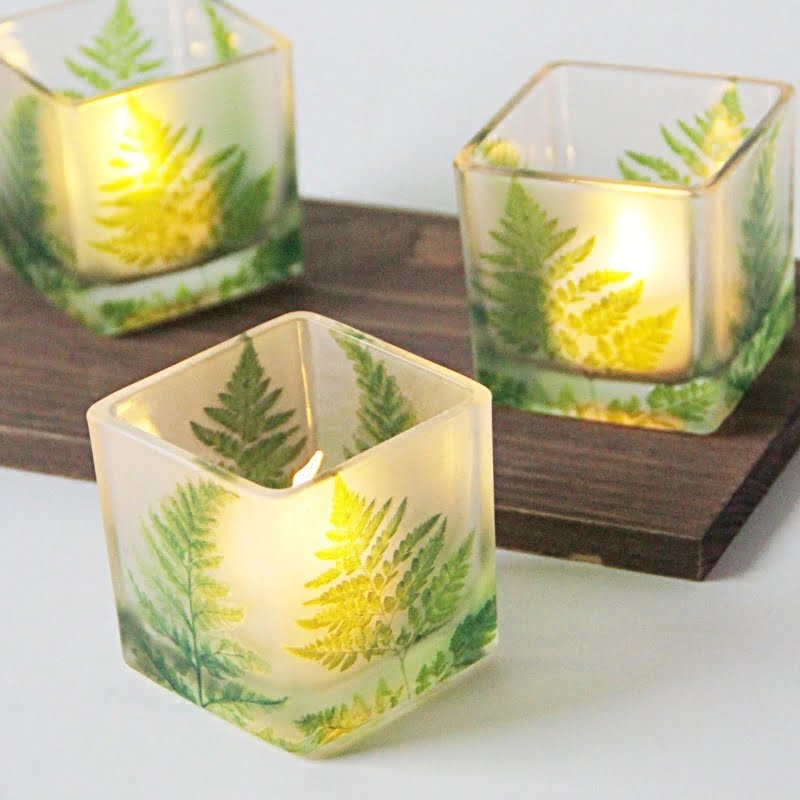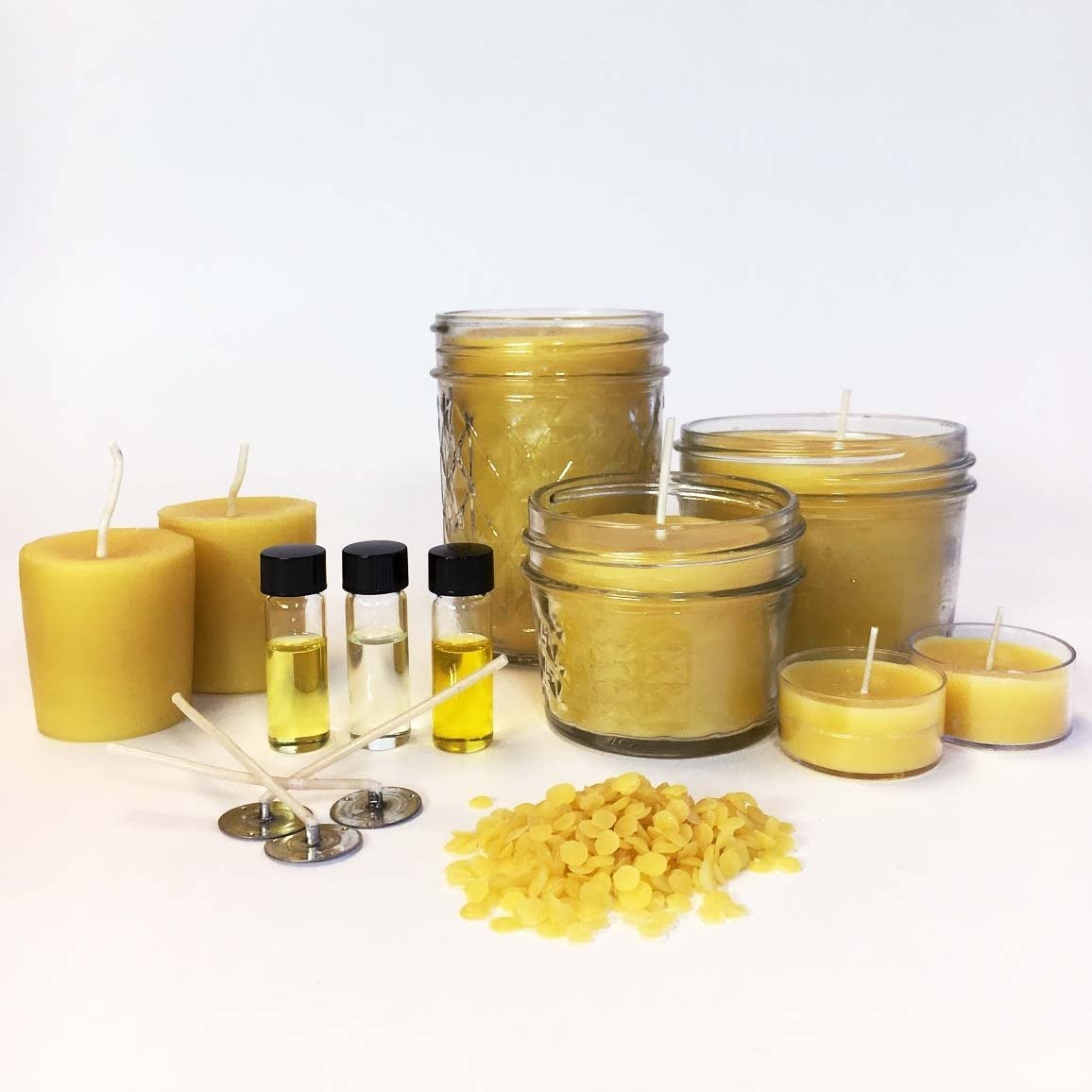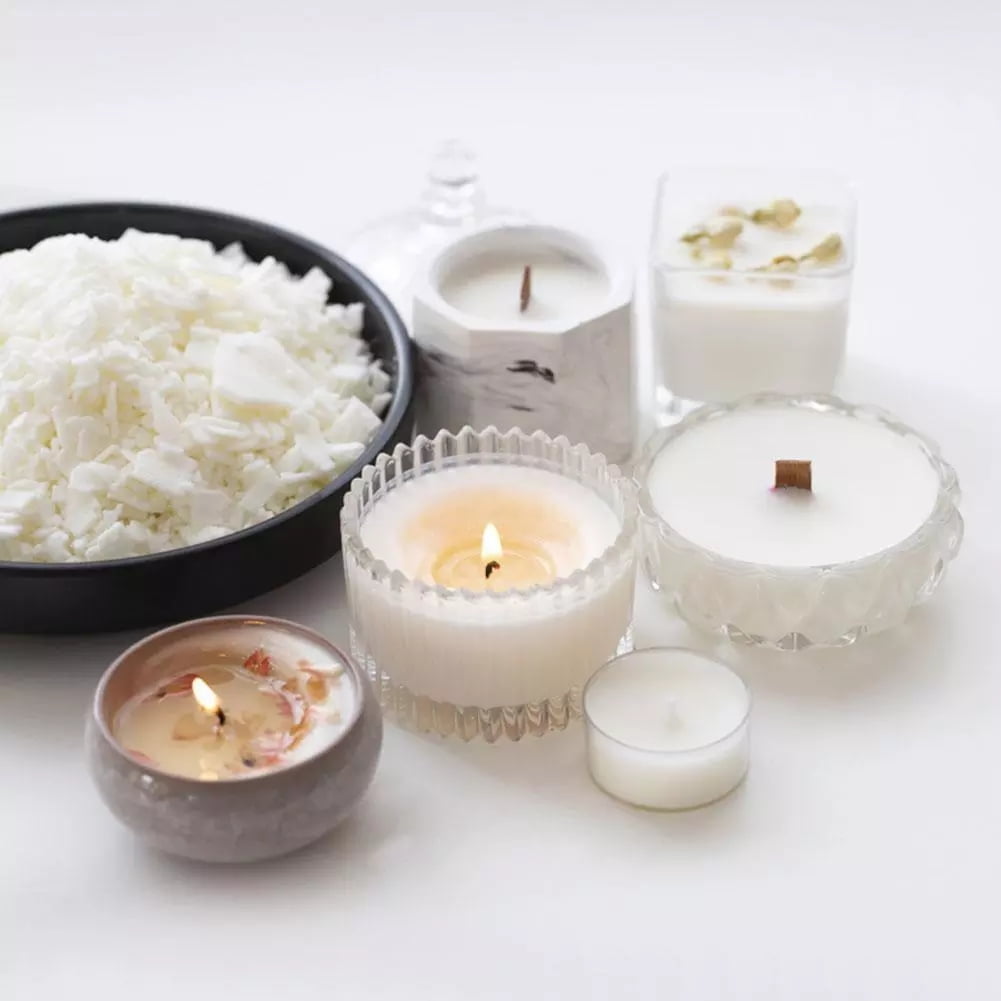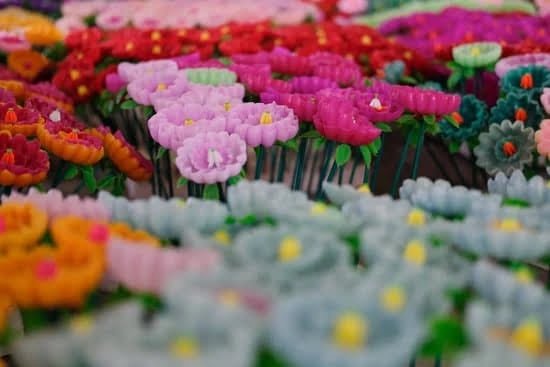Can you use any essential oil for candle making? Essential oils are a popular choice for adding fragrance to candles, but not all essential oils are suitable for this purpose.
In this article, we will explore the relationship between essential oils and candle making, including the importance of choosing the right essential oils, proper incorporation methods, safe and effective options, and common mistakes to avoid. We will also delve into the different aromas and benefits of essential oils in candles, as well as provide tips and tricks for blending essential oils to create beautiful and aromatherapeutic candles.
When it comes to making scented candles, essential oils play a crucial role in determining the overall quality of the final product. The right choice of essential oil can significantly enhance the aroma and therapeutic properties of a candle.
However, using just any essential oil may not yield the desired results. It is important to understand which essential oils are best suited for candle making in order to create high-quality, fragrant candles that offer various benefits beyond their aesthetic appeal.
Properly incorporating essential oils into candle making is another key aspect to consider. The process requires careful attention to ensure that the fragrance is evenly distributed throughout the wax without compromising its therapeutic properties. Additionally, understanding how different essential oils interact with each other when blended together can result in harmonious scent combinations that contribute to a more balanced and enjoyable olfactory experience.
The Importance of Choosing the Right Essential Oil for Candle Making
When it comes to creating candles with essential oils, choosing the right essential oil is crucial for a successful and safe outcome. Not all essential oils are suitable for candle making, as some may not blend well with the wax or emit a pleasant aroma when burned. It’s important to understand the properties of different essential oils and how they can enhance the quality of your candles.
To ensure that you choose the right essential oil for candle making, consider the following factors:
- The scent profile: Some essential oils have a strong, long-lasting scent, while others have a more subtle aroma. Consider the type of fragrance you want to achieve in your candles.
- Therapeutic benefits: Certain essential oils not only add fragrance to candles but also offer therapeutic benefits such as relaxation, stress relief, or improved focus. Consider the desired effects of your candles.
- Compatibility with wax: Not all essential oils mix well with candle wax. Some oils may cause discoloration or affect the burning performance of the candle. It’s important to research and test different oils before making a final decision.
It’s important to note that not all essential oils are suitable for candle making. While many popular essential oils like lavender, peppermint, and eucalyptus are commonly used in candles, there are also some essential oils that should be avoided due to their potential hazards when heated. Always ensure that you are using high-quality, pure essential oils that are specifically labeled for use in candle making.
How to Properly Incorporate Essential Oils Into Candle Making
To properly incorporate essential oils into candle making, it’s important to follow a few key steps to ensure that the scent is evenly distributed and the candles burn effectively. Here are some guidelines for incorporating essential oils into your candle making process:
- Choose the Right Essential Oil: Not all essential oils are suitable for candle making. It’s important to select high-quality, pure essential oils that are safe for use in candles. Some essential oils may not blend well with the wax or could pose a fire hazard, so be sure to do your research before adding any oil to your candles.
- Measure Carefully: When adding essential oils to your candle wax, it’s crucial to measure them carefully to achieve the desired level of fragrance. Too much or too little oil can affect the burn quality and scent throw of the candle, so follow the recommended guidelines for each type of oil you use.
- Timing Is Everything: The best time to add essential oils to your candles is when the wax has reached a specific temperature (usually around 185-195°F). Adding them too early can cause the fragrance to evaporate, while adding them too late can result in uneven distribution throughout the candle.
By following these steps, you can ensure that your candles are infused with a beautiful and long-lasting scent that enhances their overall appeal.
Incorporating essential oils into candle making can add a delightful fragrance that promotes relaxation and well-being. Whether you’re creating candles for personal use or to sell, using the right essential oils is crucial in achieving a high-quality end product. By following these guidelines, you can create beautifully scented candles that provide both aesthetic beauty and aromatherapeutic benefits for yourself or others.
Essential Oils That Are Safe and Effective for Candle Making
When it comes to creating beautiful and aromatherapeutic candles, choosing the right essential oils is crucial. Not all essential oils are safe or effective for candle making, so it’s important to understand which ones to use.
One of the most important factors to consider when choosing essential oils for candle making is their flash point. The flash point refers to the temperature at which an oil can ignite if exposed to an open flame.
Essential oils with a low flash point may not be safe for use in candles, as they can pose a fire hazard. It’s important to select essential oils with a higher flash point, such as citrus oils, floral oils, or woodsy oils, which are generally safe for candle making.
In addition to flash points, it’s also important to consider the fragrance strength and stability of different essential oils. Some essential oils have a stronger scent throw than others, and certain scents may dissipate quickly when exposed to heat. Oils with good stability and strong fragrance are ideal for candle making, as they will produce a long-lasting and aromatic result that can enhance the ambiance of any space.
| Essential Oil | Flash Point |
|---|---|
| Lavender | 156°F |
| Peppermint | 162°F |
| Cedarwood | 200°F |
Common Mistakes to Avoid When Using Essential Oils for Candle Making
When it comes to making candles with essential oils, there are some common mistakes that you’ll want to avoid in order to ensure that your finished product is safe, effective, and beautiful. Here are some key mistakes to steer clear of as you embark on your candle making journey.
Choosing the Wrong Essential Oil
One of the most important things to keep in mind when using essential oils for candle making is to select the right oil for the job. Not all essential oils are suitable for use in candles, as some may not hold up well during the burning process or may produce undesirable scents when heated.
It’s crucial to do your research and choose oils that are specifically recommended for candle making. Some popular choices include lavender, eucalyptus, citrus scents, and vanilla.
Using Too Much Essential Oil
Another common mistake when incorporating essential oils into candle making is using too much of the oil. While it may be tempting to add more oil in order to create a stronger scent, doing so can actually be counterproductive. Using an excessive amount of essential oil can lead to an overpowering or unpleasant aroma when the candle is burned.
Additionally, it can affect the quality of the burn and even pose safety hazards. It’s important to follow recommended guidelines for dilution and usage rates when working with essential oils in candles.
Neglecting Proper Blending Techniques
Properly blending different essential oils together is also crucial for successful candle making. Neglecting this step can result in uneven distribution of scents within the candle or even negative chemical reactions between certain oils. Take the time to research blending techniques and experiment with different combinations in small batches before creating larger quantities of candles. This will help you achieve a harmonious blend of aromas that enhances the overall appeal of your candles.
Exploring the Different Aromas and Benefits of Essential Oils in Candles
When it comes to candle making, the use of essential oils to add aroma is a popular choice among crafters. However, not all essential oils are suitable for use in candles. It’s important to understand that not every essential oil is safe or effective for candle making. Each essential oil has its own unique scent profile and potential benefits, so choosing the right ones can significantly enhance the quality and appeal of your candles.
Some essential oils may have a lower flash point, causing them to evaporate too quickly when added to the hot wax. Others may have a strong, overpowering scent that can be off-putting when used in larger quantities for candle making. When selecting essential oils for your candles, consider how well the scents complement each other and whether they create a pleasant aromatic experience when blended together.
In addition to their pleasing aromas, certain essential oils also offer various benefits such as relaxation, stress relief, improved focus, and even insect repellent properties. For example, lavender essential oil is known for its calming effects while citrus oils like lemon or orange can promote an uplifting and energizing atmosphere. Understanding the different aromas and benefits of essential oils can help you create candles that cater to specific moods or needs.
| Aroma | Benefits |
|---|---|
| Lavender | Calming effects |
| Citrus (lemon/orange) | Promotes uplifting and energizing atmosphere |
| Eucalyptus | Relieves respiratory issues |
Tips and Tricks for Blending Essential Oils for Candle Making
When it comes to making candles with essential oils, the possibilities are endless. Blending different essential oils can create unique and beautiful aromas that go beyond what a single oil can offer. However, blending essential oils for candle making requires some knowledge and technique to ensure the scents complement each other well.
Understanding Essential Oil Notes
One important aspect to consider when blending essential oils for candle making is their notes. Essential oils are categorized into top, middle, and base notes based on their evaporation rate and fragrance strength. When blending essential oils for candles, it’s crucial to understand how these notes work together to create a balanced and harmonious scent profile.
Start With a Vision
Before diving into blending essential oils, it’s helpful to have a vision of the final scent you want to achieve. Whether it’s a calming and soothing aroma for relaxation or an invigorating and energizing fragrance for focus, having a clear vision will guide your blending process.
Experimentation Is Key
Blending essential oils for candle making is an art that often requires experimentation. Don’t be afraid to mix different combinations of essential oils in small quantities to see how they interact with each other. Keep track of your blends and take note of the ratios used so you can adjust accordingly in future creations.
Ultimately, blending essential oils for candle making is a creative process that allows you to craft unique scents that cater to your preferences or the preferences of those who will enjoy your candles. With some knowledge of essential oil notes, a clear vision of your desired scent, and a willingness to experiment, you can create beautifully aromatic candles that elevate any space.
Conclusion
When it comes to creating beautiful and aromatherapeutic candles, choosing the right essential oils is crucial. Essential oils not only provide a pleasant aroma, but they also have potential health and wellness benefits. From relaxation to stress relief, the right combination of essential oils can enhance the overall experience of burning a candle.
However, not all essential oils are suitable for candle making. It’s important to select high-quality, pure essential oils that are safe for burning and can effectively disperse their fragrance when used in candles. Additionally, understanding how to properly incorporate essential oils into candle making is key to ensuring a successful result.
By considering the safety, effectiveness, and proper blending techniques of essential oils for candle making, you can create a truly delightful olfactory experience for yourself and others. With careful thought and attention to detail, you can craft candles that not only look beautiful but also offer the therapeutic benefits of aromatherapy. So, while it may be tempting to use just any essential oil for candle making, the importance of selecting the right ones cannot be overstated.
Frequently Asked Questions
Are All Essential Oils Safe for Candle Making?
Not all essential oils are safe for candle making. Some essential oils have low flash points, which means they can catch fire when exposed to heat, making them unsafe for use in candles. It’s important to research and carefully choose essential oils that are specifically recommended and safe for candle making.
Can You Use Any Scented Oil for Candles?
While scented oils can be used for candles, not all scented oils are suitable for this purpose. Some scented oils may have low flash points or contain additives that make them unsafe for burning in candles.
It’s important to select fragrance oils that are specifically designed and marketed for candle making to ensure safety and quality of the final product.
Can I Use DoTerra Oils to Make Candles?
DoTerra oils are generally considered safe for use in candle making as long as they follow specific guidelines provided by the company. It’s important to research and adhere to any recommendations or restrictions in using DoTerra oils for candle making to ensure safety and best results. Always consult with the oil manufacturer or supplier for their specific usage recommendations.

Welcome to my candle making blog! In this blog, I will be sharing my tips and tricks for making candles. I will also be sharing some of my favorite recipes.





